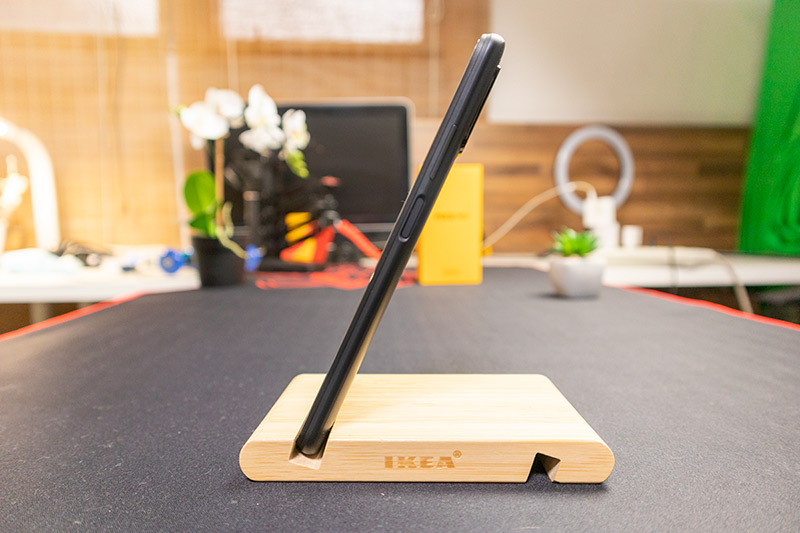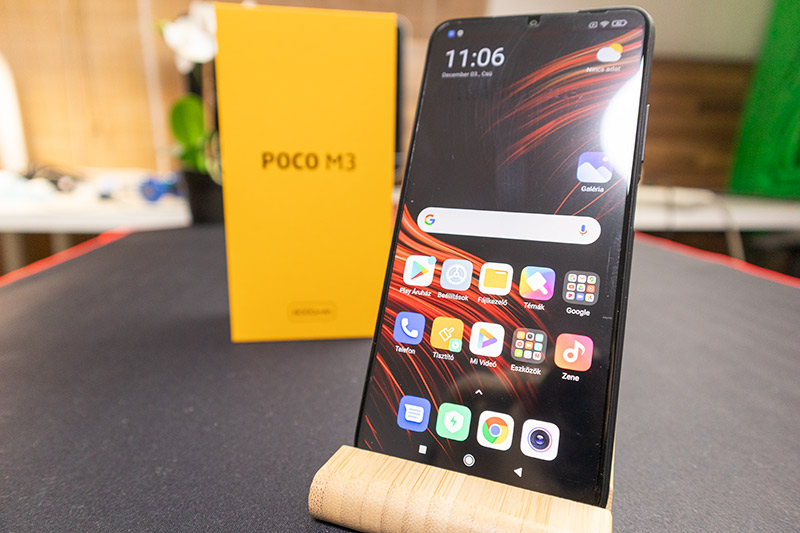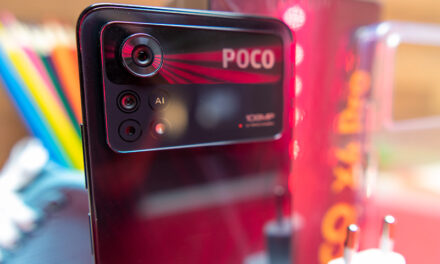
Xiaomi POCO M3 teszt – a belépőszint királya érkezett?
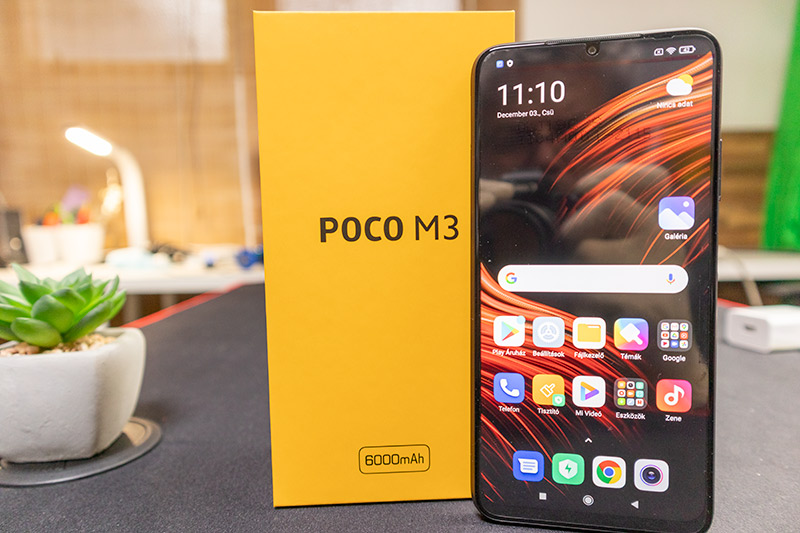
Rendesen odacsapott a Xiaomi a konkurenciának a POCO M3-mal!

Tartalomjegyzék Mutasd
Xiaomi POCO M3 – Bevezető
Szerencsésnek mondhatom magam, hiszen idén mind a három POCO telefonról tudtam (tudok) cikket írni. A POCO F2 Pro hamar megérkezett hozzám, a POCO X3 már a hivatalos bejelentés előtt a kezemben volt, az M3 pedig a bemutatót követő harmadik napon érkezett hozzám.
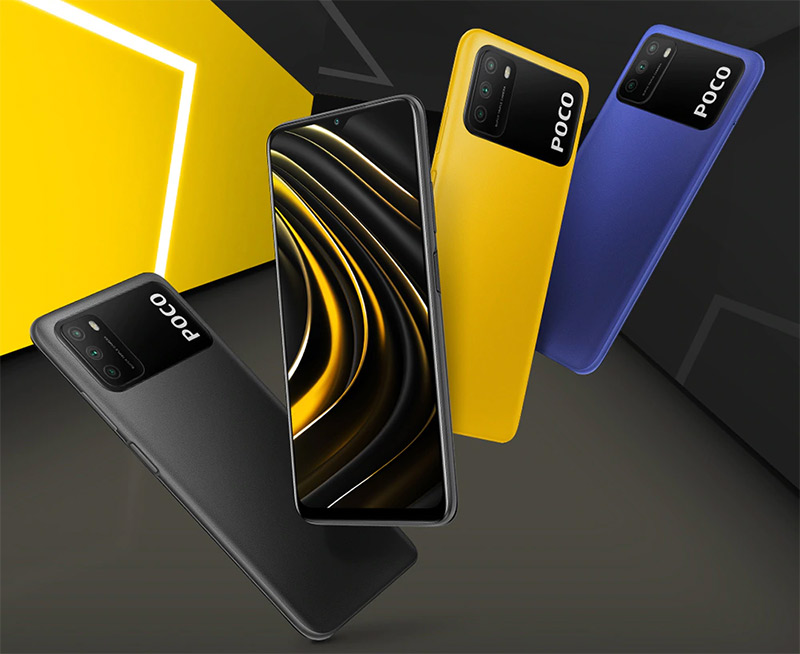
A POCO-t, mint a Xiaomi almárkáját, úgy ismertük, mint a játékos, vagyis gamer telefonokat gyártó részleg. Ez nem teljesen igazolódott be az F2 Pro kapcsán, ám az X3 esetén teljesen egyértelmű volt, hogy gamer telefont kaptunk. Az M3 azonban teljesen összekavart. Ez a készülék nem egy csúcstelefon, sőt, nem is egy gamer telefon, viszont egy hihetetlen jó ár-teljesítmény mutatóval rendelkező mobil.
Szóval, feltehetjük a kérdést, hogy ha így van, akkor most mi is a POCO almárka, mert, hogy nem egy gamer telefonokat előállító részleg, az már biztos!
Nos, nekem egyre inkább úgy tűnik, hogy a POCO egy tesztműhely, ahol azt vizsgálják, hogy az egyes újdonságok mennyire jönnek be a vásárlóknak. Ha működik az újdonság, megjelenhet a Xiaomi vagy a Redmi telefonokban is.
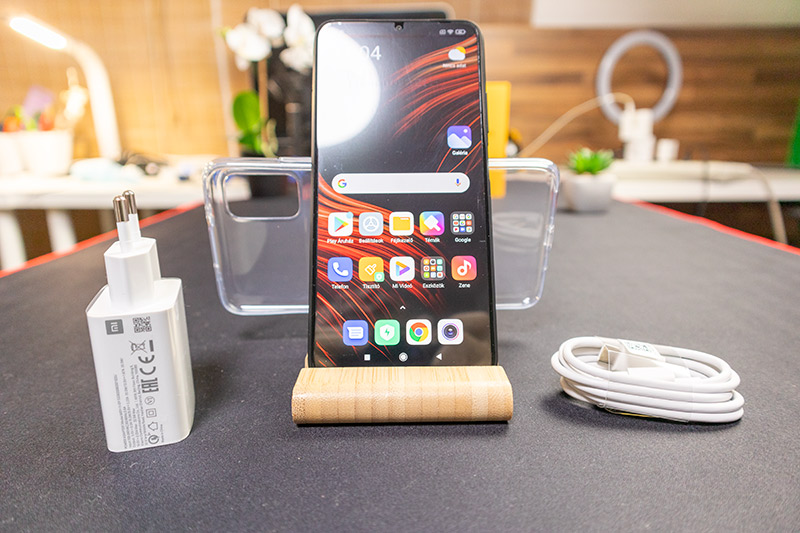
Erre talán a legjobb példa az X3 120 hertzes IPS kijelzője, ami tényleg fontos újítás volt, és mint kiderült, hamarosan találkozhatunk ilyennel a megújuló Redmi Note szériában is, de ide sorolhatjuk az X3-ban debütáló ujjlenyomat érzékelőt is, ami az oldallapra, a bekapcsológombra került.
Ez a cikk azonban nem a POCO-ról, mint gyártótól, hanem az új költséghatékony telefonjukról szól. Nem szeretném lelőni a poént, de annyit már most, a bevezetőben leírok, hogy nem lepne meg, ha az M3-hoz nagyon hasonló telefonok hamarosan a Redmi sorozat belépő szintjén is megjelennének. Addig azonban, amíg ez nem történik meg, a POCO M3-ban a belépőszint új királyát kell tisztelnünk!
Csomagolás és tartozékok
A POCO M3 a megszokott sárga dobozban érkezik. Középen egy nagyobb POCO felirat, a doboz alsó szélén pedig az akkumulátor kapacitása, ami jelen esetben 6000 mAh. A doboz alján megtaláljuk a tartozékok listáját, ám például olyan fontos adatról, mint a dobozban található mobil háttértárának mérete sehol nem találunk információt.
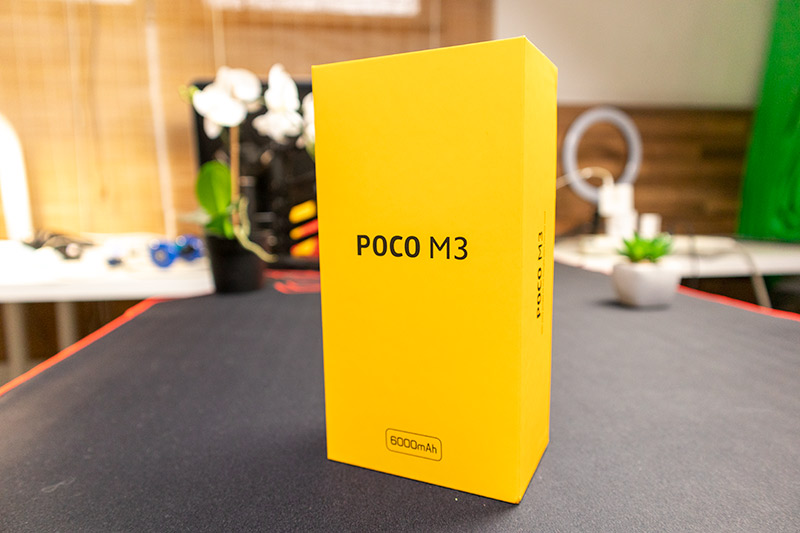
A tetőt levéve egy, a víztiszta szilikon hátlapot és a SIM-tűt tartalmazó csomagot találunk, ebben vannak a leírások is a telefonhoz. Alatt a telefon, a legalsó sorban pedig a töltőfej, és egy USB Type-C kábel. Más nincs. A töltőfej természetesen európai dugós, így átalakítóra nem lesz szükségünk. Ami ezzel kapcsolatban még fontos és említésre érdemes, hogy a töltőfej 18 wattos gyorstöltésre képes.
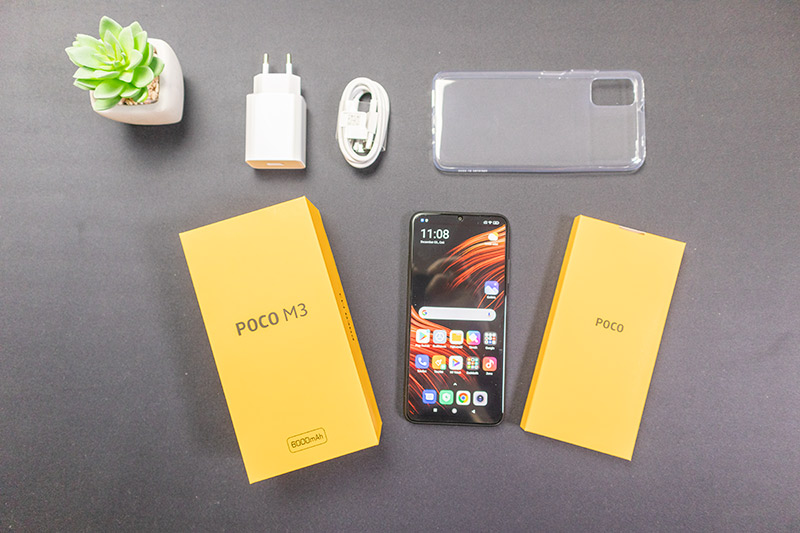
Külső
A POCO M3 a belépőszintet erősíti a Xiaominál, és ez érezhető az anyaghasználaton is. A hátlapi üveget, vagy üveget utánzó műanyagot elfelejthetjük, ahogy a mutatós fémkeret is áldozatul esett. Ezzel együtt a telefon még sem kelt olcsó benyomást.
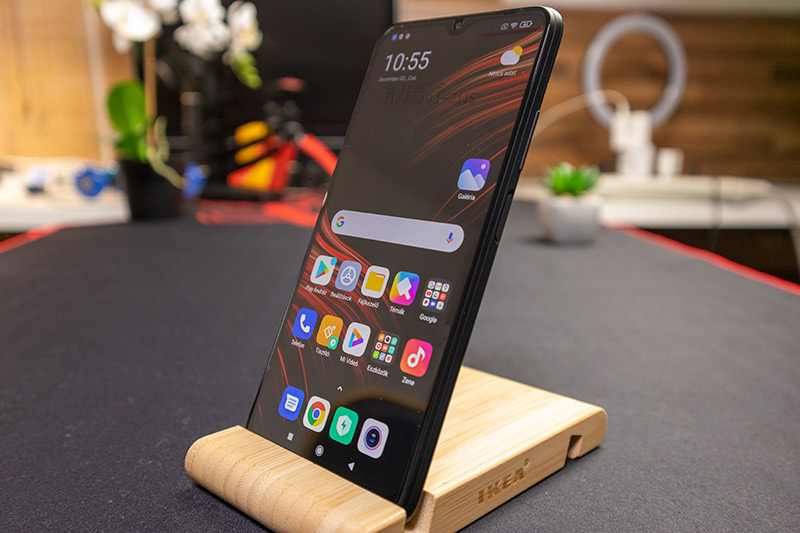
Sőt, kicsit olyan érzésem van, mintha a POCO direkt rájátszana az olcsó hatásra. Rengeteg olyan telefon van a piacon, ami műanyag, de üveget imitáló hátlappal jelenik meg, de az M3 nem ilyen. Emiatt aztán karakteres dizájnt kapunk, ami kiemeli a tömegből.
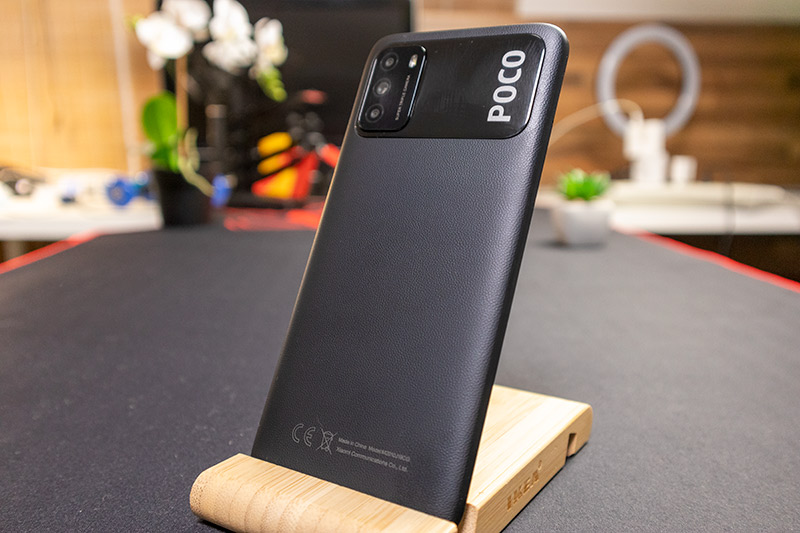
A hátlap műanyagja a kijelzőig hajlik, vagyis nincs külön keret. A fogása meglepően barátságos érzés, ami köszönhető talán a bőrt mintázó hátlapi műanyag érintésének.
Hátul a bal felső részre került a kamerasziget a három optikával, ezt mintegy balanszírozva a baloldalra tettek egy nagy POCO feliratot. Ez a rész, szemben a hátlap többi területével fényes műanyag.
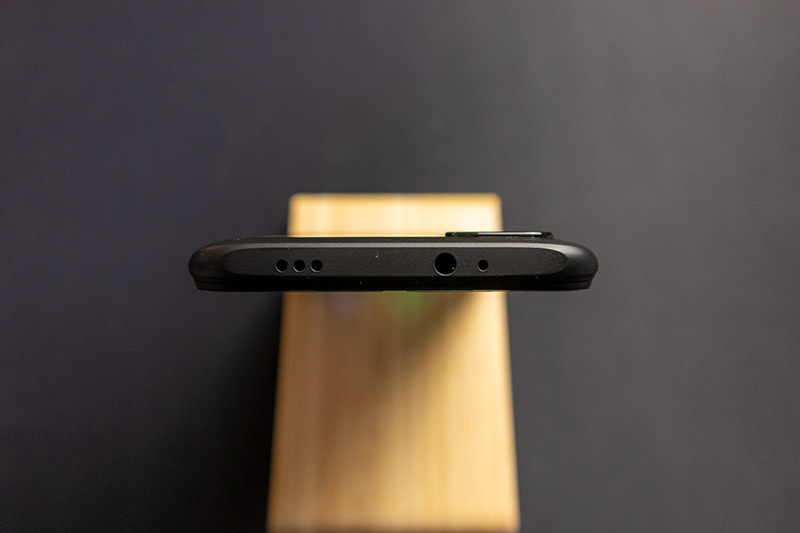
Szemből a baloldali peremen csak a SIM-tálca található, ebbe egyidejűleg tehetünk két SIM és egy memóriakártyát.
A túloldalon a hangerőszabályzó, és a POCO X3-ból már megismert bekapcsológomb, ami egyben az ujjlenyomatérzékelő is.
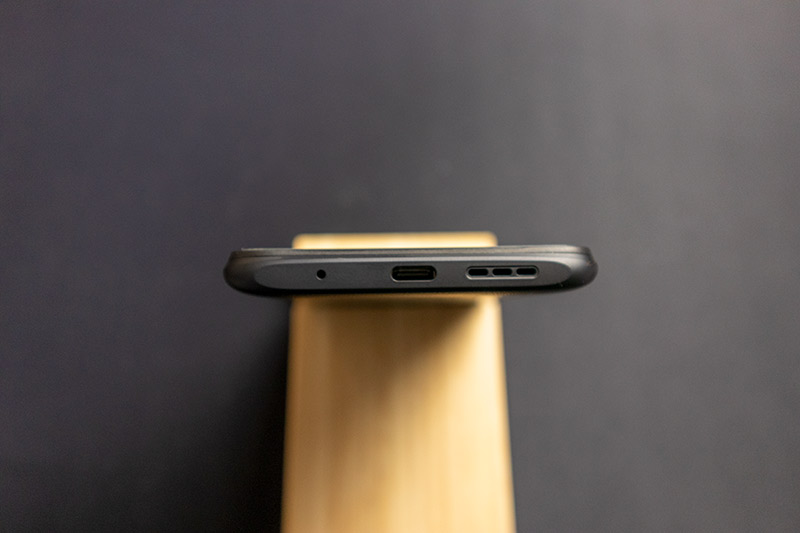
Alul egy hangszórórács, egy Type-C USB port és egy mikrofon, míg a felső élen egy újabb mikrofon, egy újabb hangszórórács, az infraport, amit ügyesen a hangszórórács részének álcáztak és egy fajhallgató csatlakozó.
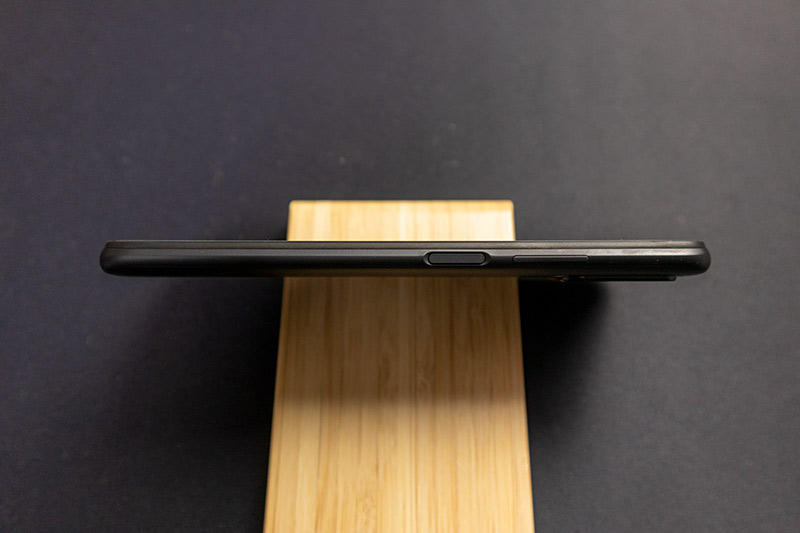
Az előlapon a kijelzőbe belelóg egy apró notch a kamerával. Az előlap kijelző arány 83 százalék körüli, ami nem kimagasló érték, bár szörnyen rossznak sem mondhatjuk. Tény, hogy láttunk már keskenyebb kereteket is, de ettől a telefon még nem mondható bumszlinak.
Hardver
Processzor, memória
A telefon Snapdragon lapkát kapott, mégpedig a nyolcmagos Snapdragon 662-t. Ez a nyolcmagos, maximum 2 GHz-en működő lapka a 660-as jelzésű megoldás közvetlen utódja, amiben leginkább a fotós képességeket fejlesztették az elődhöz képest.
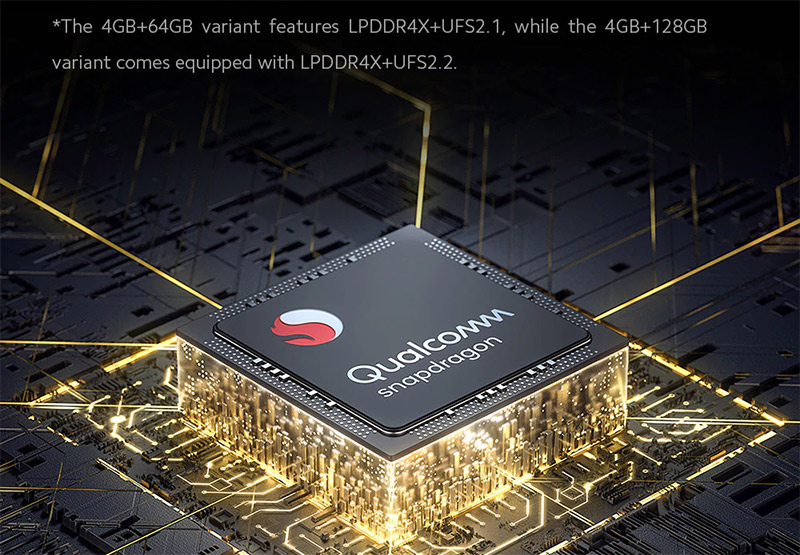
A proci erőben nagyjából a MediaTek Helio G85 szintjén áll, ami a gyakorlatban azt jelenti, hogy a papírforma szerint, egy nagyon használható megoldásról van szó, lényegében mindenre elég lesz, talán csak a játékok grafikai beállítását kell majd butítanunk, hogy minden rendesen fusson.
A mobil két verzióban vásárolható meg. Mind a kettőben 4 GB a rendszermemória, a kisebbikben 64- míg a nagyobbikban 128 GB a háttértár. Ez utóbbinál nem csak a kapacitás különbözik, hanem a tár fajtája is. A kisebbik UFS 2.1, míg a nagyobbik a gyorsabb UFS 2.2-re épül.
Kijelző
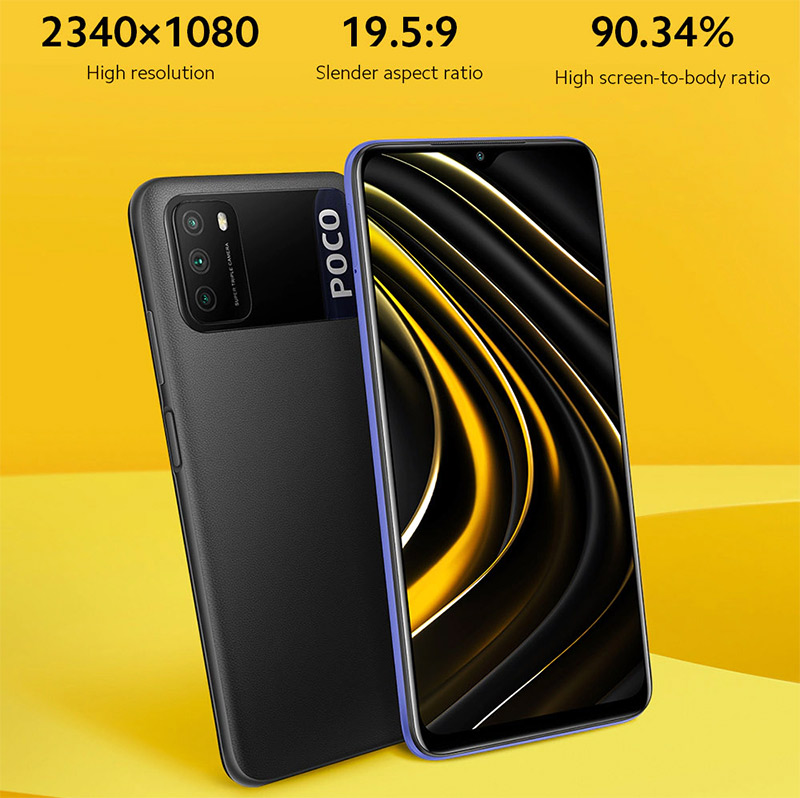
Az előlapi kamera a megszokott módon egy viszonylag apró kameraszigeten kapott helyet. A kijelző IPS, a felbontása 1080 x 2340 pixel, vagyis FHD+. A képátló 6,53 col, vagyis ez sem lett apró. Az oldalarány 19,5:9-es, a pixelsűrűség 395 ppi. A fényerő nem tűnik soknak, hiszen csak 400 nit van megadva. Ez még gond lehet.
Kamerák
A telefonon a belépőszinthez mérten elég kamera van, de manapság azért többhöz szoktunk. Ennek oka, hogy az ultraszéles látószöget nemes egyszerűséggel lehagyták a telefonról.
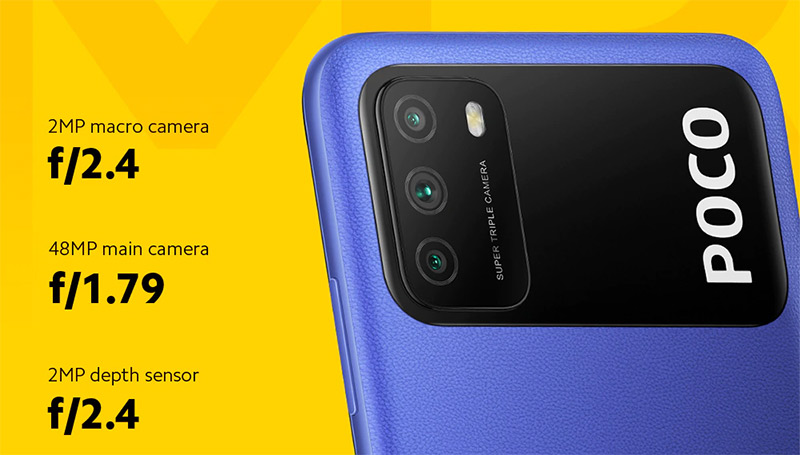
A főkamera egy 48 megás, f/1.8-as rekeszértékkel rendelkező megoldás, mellette egy 2 megás makrót és egy 2 megás mélységérzékelőt találunk.
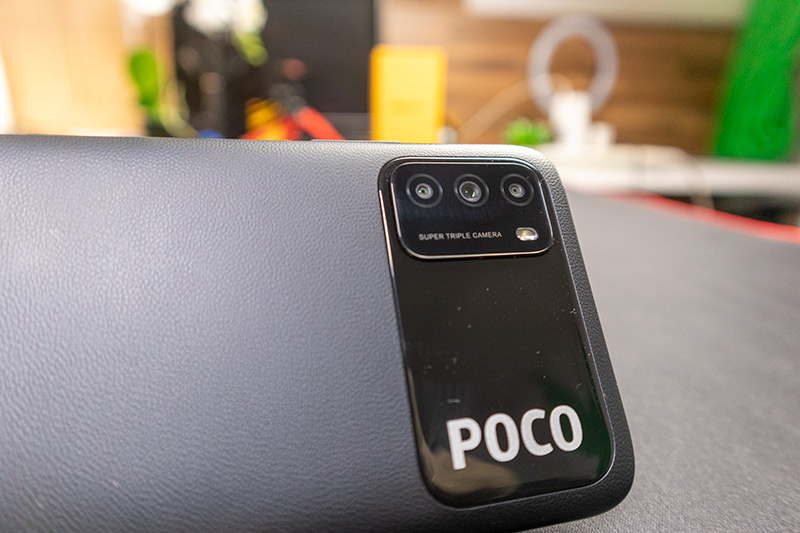
Az előlapon található szelfikamera mindössze 8 megapixeles, ami nem rossz, de manapság ennél nagyobbakat is látunk már ezen az árszinten.
Egyéb képességek
Sajnos, mivel ez egy olcsó készülék, a Wi-Fi 6 és az 5G még nem állrendelkezésre. Van helyette Wi-Fi 5 és 4G, utóbbi természetesen hazánkban is működik. Bluetooth-ból már 5.0-ás verzió áll rendelkezésre.
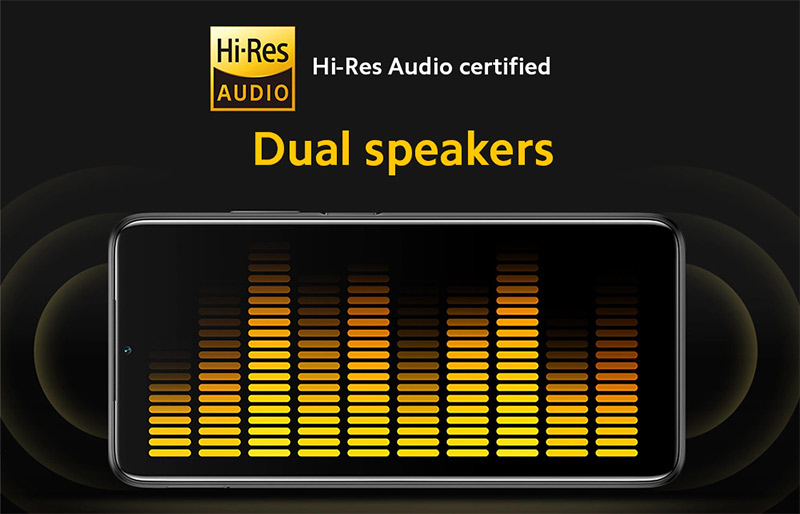
A navigációhoz A-GPS, GLONASS és BDS támogatás jár, van infraport és FM rádió is. Szenzorokból az ujjlenyomatolvasó, a gyorsulásmérő, a közelségérzékelő és az iránytű fért a csomagba.
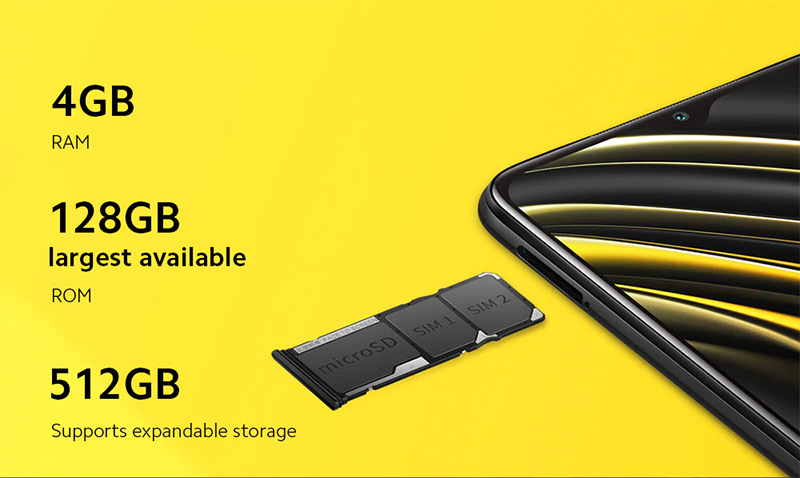
Fájó pont, hogy a belépőszintbe a Xiaominál továbbra sem fér bele a kiépítésbe az NFC, de ez még valahol érthető, ám az értesítési LED hiányára nem nagyon találok magyarázatot.
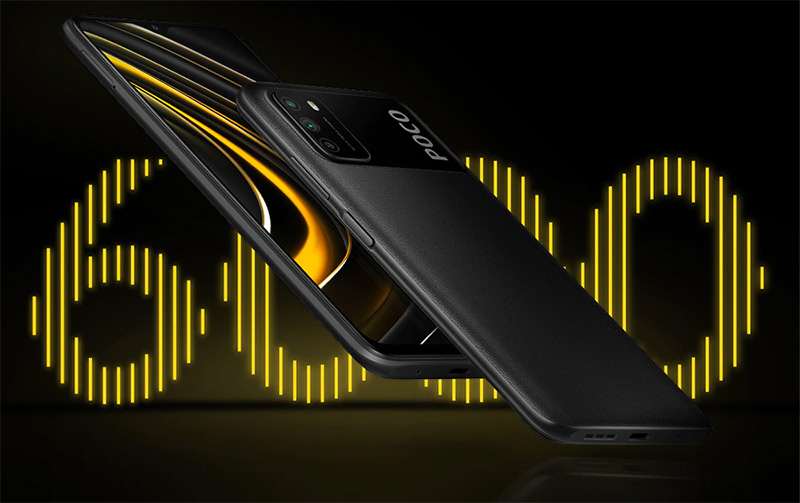
Ami viszont több, mint örvendetes, hogy a telefonba hatalmas, 6000 mAh kapacitású akkumulátor került. Hogy ez mire lesz elég, a tesztből majd kiderül. Amit viszont már most tudunk, hogy a töltés USB Type-C porton át történik, és kapunk hozzá 18 wattos gyorstöltést is!
Tesztek
Kezdjük a hardverrel!
Az alábbi táblázatban megtaláljátok a pontos eredményeket. Szokás szerint 4 tesztet vettem igénybe a mérésekhez. Az Antutu és a 3D Mark a játékok alatti képességet mutatja, míg a PC Mark a mindennapi használatot modellezi, míg a Geekbench a nyers erőt méri.
A teszteredményekből jól látszik, hogy a telefonon nem fognak az új játékok észvesztő sebességgel száguldani. Azonban, ez nem jelenti azt, hogy nem lehet vele játszani, mert a vas elegendő teljesítménnyel rendelkezik, maximum butítunk kicsit a grafikán.
A telefon a mindennapi tevékenységekhez természetesen bőven elég kakaót kapott, azért egy nyolcmagos, 2 GHz-es Snapdragon egység, még ha nem is a csúcskategória, szavatolja a megfelelő képességeket.
| POCO X3 | Redmi Note 8 Pro | POCO M3 | |
| Processzor (SoC) | Qualcomm Snapdragon 732G | MediaTek Helio G90T | Qualcomm Snapdragon 662 |
| Tesztprogram | |||
| AnTuTu Bench. 7.x | 280786 pont | 273390 pont | 139536 pont |
| AnTuTu Bench CPU/GPU/UX/MEM | 78756/54932/ 49285/52213 pont | 97167/79348/ 45801/57074 pont | 548682/11335/ 31835/41498 pont |
| Geekbench 5.x (score/single/multi) | 1284/567/1769 pont | 854/3891 pont | 371/3160/1359 pont |
| PC Mark Work 2.0 | 8255 pont | 10247 pont | 5806 pont |
| PC Mark Computer Vision | 4252 pont | 7927 pont | 3552 pont |
| PC Mark Storage | 14800 pont | Hibával leáll | 12708 pont |
| 3DMark Sling shot /extreme opengl | 3777 / 2702 pont | 2940 / 2382 pont | 1843 / 1170 pont |
| Wild Life/Stress | 370/371 | ||
| 3D Mark API Overhead OpenGL/Vulkan | 357120 / 0 pont | 84113/556938 pont | 213988/261596 pont |
Fényképezés
Ahogy feljebb írtam, elég fura lett a kamera setup, hiszen kimaradt az ultraszéles látószög. Számomra ez nem jelent negatívumot. Nem sok értelmét látom a rossz minőségű kameráknak, amiket csak azért tesznek a telefonokba, hogy eladhatóbbak legyenek. Ennél jóval ésszerűbb, ha megtakarítanak egy kis pénzt, és azt a főkamerára költik.
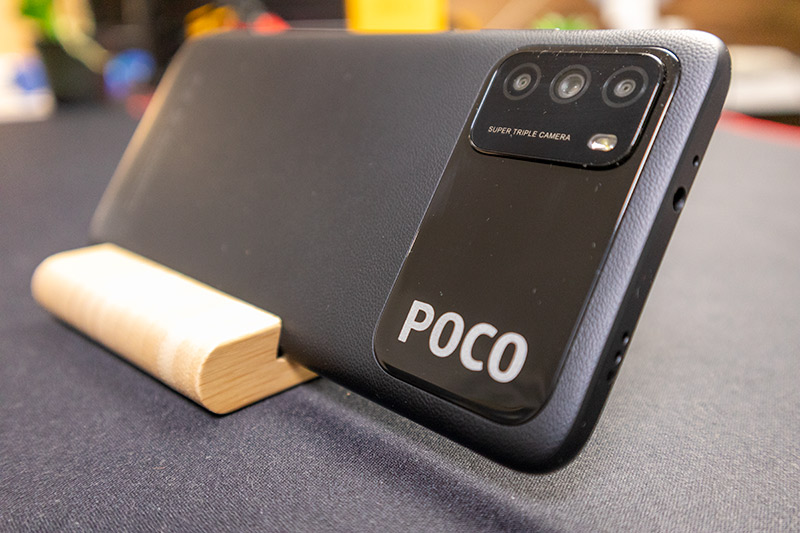
Szóval a széleslátószög annyira nem hiányzik, de ha teljesen őszinte akarok lenni, akkor sokkal jobban örültem volna, ha ezt hagyják meg, és a 2 megás makrokamerát dobják a süllyesztőbe. Nem így történt, aminek biztos van oka, csak én nem jövök rá, hogy mi.
Amiben reménykedtem, vagyis, hogy a főkamera így fejlettebb lehet, viszont bekövetkezett. Nem kell persze hasra esni tőle, de a Sony IMX852 Exmor RS nem rossz darab, ahogy a 4-az-1-ben pixelösszevonást használó 48 megapixeles felbontás sem az. A lencserendszer hattagú lett, ami nem jelent kiemelkedő értéket, de nem is lebecsülendő.
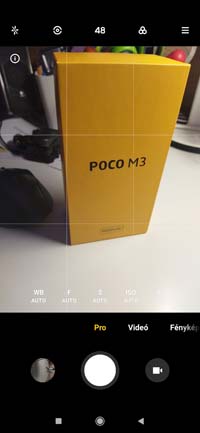 |  | 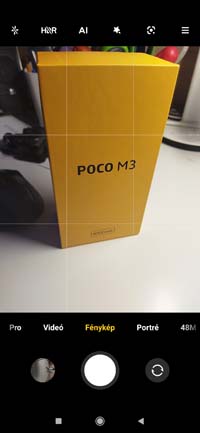 |
Az elkészült képek, ahogy Ti is láthatjátok egészen jók lettek. Torzítás nem nagyon van, a szélek, sarkok részletessége is rendben van, normál nappali fény mellett az elkészült képek részletessége, a színek dinamikája, a kontraszt mind rendben van. Persze ettől ez még nem lesz egy csúcsfényképező, de ezen az árszinten ennél rosszabbat is simán benyelünk.
A helyzet romlik, ha a fény kevés, ne adj isten sötét van. Az éjszakai mód azért itt is használhatóra sikerült, de a telefon nehezen találja a középutat a kép világosítása és a zajcsökkentés között. A képek így legalább élvezhetőek, bár néha erősen zajosodnak, és a részletességen is lehetne javítani.
Makróval készült képek
 |  |
Ez a zajosság azonban nyomban szelídül, ha kapunk egy kis segítséget, vagyis plusz fényforrásokat az éjszakában.
A kamerával természetesen van módunk 48 megapixeles módban fényképezni, ehhez a Sony szenzora jó partner. Más kérdés, hogy van-e értelme ekkora felbontásnak, hiszen így elveszik a pixel összevonással elérhető nagyobb pixelméret, vagyis a részletesség nem javul érdemben a nagyobb képméret, a több képpont miatt.
64 megapixeles képek
 |  |
A főkamerával 1080p-s vagy 720p-s videókat készíthetünk. A kép minőségével itt is elégedett voltam, talán csak a rázkódáscsökkentés, ami hiányzik belőle.
Amúgy rázkódáscsökkentés 1080p-nél sincs, szóval biztos kéz kell ahhoz, hogy tényleg élvezhető videókat készítsünk.
Ezzel együtt, az FHD videók nem rosszak, ismét csak kiemelve, hogy ezt az ár függvényében érdemes csak vizsgálni.
Összességében a főkamera jobb, mint amire számítottam, nem is kevéssel. A világot nem váltja meg, de bőven elég lesz egy átlagos nyaralós fényképalbum elkészítéséhez. Még sötétben is használható, bár itt már kiütköznek a képességbeli hiányok.
12 megapixeles képek
 |  |
 |  |
 |  |
A makrokamerára nem szeretnék sok szót vesztegetni. Van, használható, a Facebookos megosztásokhoz jó lesz, de másra nem.
A szelfikamera olyan amilyen. Nem rossz, de a 8 megás felbontás azért már rég nem a csúcs. Normál nappali fényviszonyok mellett használható képeket kapunk, de ennél többre ne számítson senki.
A kameraszoftver természetesen lehetővé teszi a megszokott extrákat, így van lassított és gyorsított felvétel, panorámamód és rövid videó, ám hiányzik például az erősebb Xiaomikban megtalálható Vlog effekt mód.
Szoftver
Ahogy a POCO telefonok mindegyike, ez a készülék is a MIUI rendszerrel érkezik, természetesen a legújabb, 12-es verzióval. A Xiaomi és a POCO telefonok között, a szoftverben mindössze annyi a különbség, hogy a POCO a POCO Launcher nevű, a Google Play store-ból is letölthető indítófelületet használja.
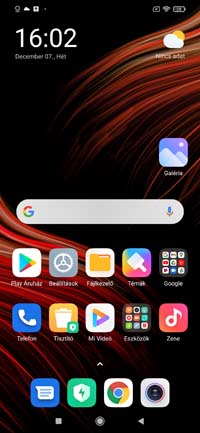 |  | 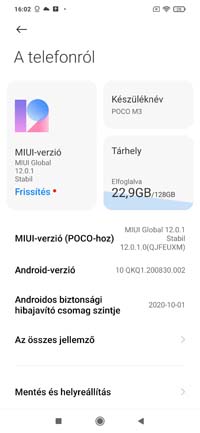 |
Engem meg is fertőztek, mert amióta POCO telefonokat tesztelek, azóta a saját Xiaomi telefonomon is POCO Launchert használok, nekem nagyon bejött.
Amúgy a MIUI magában is bőven kitöltene egy saját cikket, ráadásul verzióról-verzióra egyre jobb, szóval erről nem is írok többet. Aki használt már MIUI-t az tudja milyen, aki nem, az sürgősen próbálja ki, aztán ha megtörtént, úgyis vesz egy Xiaomi telefont magának, vagy megnézi, hogy az ő készülékére nem lehet-e feltelepíteni.
 |  | 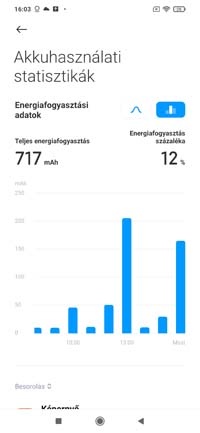 |
A szoftver kapcsán annyit érdemes még megemlíteni, hogy a Xiaomi becsülettel küldi a frissítéseket, nem csak a MIUI verziók frissítését, hanem az Android biztonsági frissítéseit is. Vagyis, ha szeretnéd, hogy a telefonod szoftvere mindig naprakész legyen, akkor ez egy újabb remek érv a Xiaomi telefonok vásárlása mellett.
Használat
Szokásomtól eltérően, ez most nem lesz egy hosszú fejezet, mert ez a telefon egyszerűen dög unalom. Amit ígérnek az működik, amit meg nem, azt ne is keressük. Telefonnak tökéletes, jók a hangszórók, jók a mikrofonok. A gyártó kiemeli a sztereó hangzást, mint extrát. Tény, nagyon sok telefonban tényleg extrának számít ez, azonban a Xiaominál már a Note 9-be is bekerült már, a POCO esetén pedig az X3 büszkélkedhet vele. Szóval jó a képesség, haszna is van, de olyan nagyon nem újdonság már.
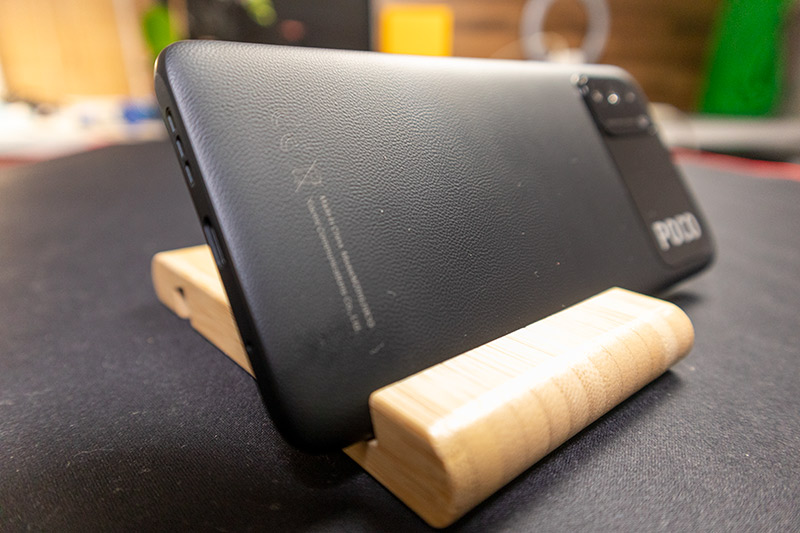
A kijelző kapcsán írtam, hogy a 400 nit fényerő nem sok. Ez tény, de az e tény miatti aggodalmam nagyjából addig tartott, amíg bekapcsoltam a telefont. A kijelző jó. Élénk színek, jó kontraszt, meg van minden, hogy a felhasználói élmény tökéletes legyen. És igen, a 400 nit valahogy mégsem kevés, bár tény, azért egy jó AMOLED-et napfényben hálásabb geladat használni.
A hardver ereje a tesztekből lemérhető, nem hiszem, hogy bárki is sírna miatta.
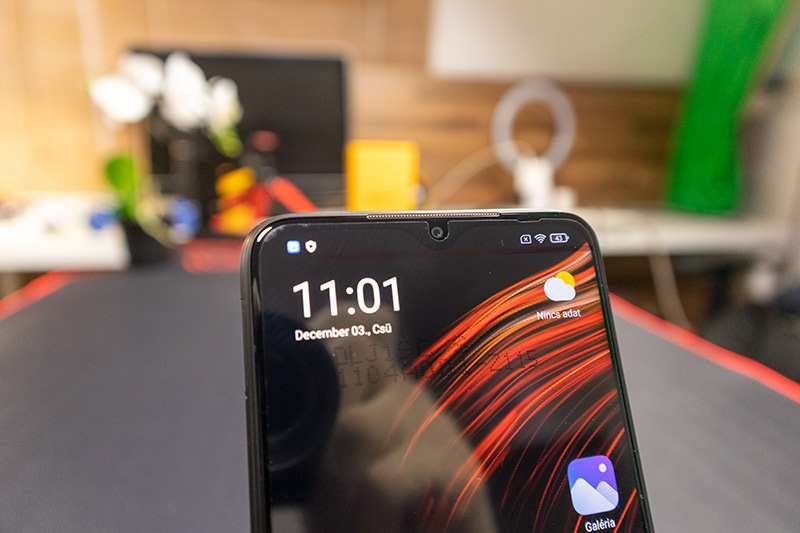
A navigáció, a Wi-Fi és a Bluetooth teljesen szokványosak, jól működnek, ahogy egy Xiaomi telefon esetében ezt el is várjuk. Szóval ezekre tényleg nem érdemes szót vesztegetni.
Ami számomra egyértelműen hiányzik, az értesítési LED, ahogy azt jeleztem, nem igazán értem ennek miért kell egy vadiúj telefonból kimaradnia, még úgy sem, hogy ez egy olcsó telefon.
Az NFC hiányát valahol még értem, végül is ez a belépőszint, és a Xiaomi ezzel a képességgel is megkülönbözteti a különböző kategóriába küldött készülékeit.
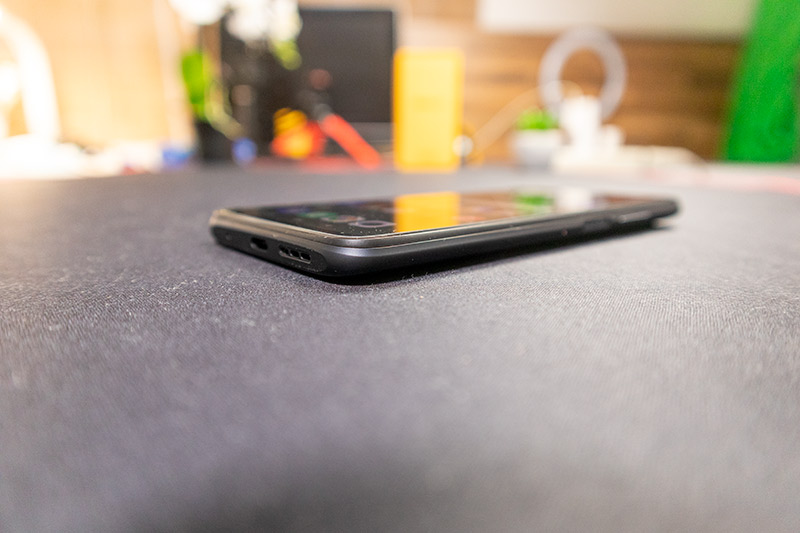
A külső kapcsán azt gondolom senkinek nem lesz panasza. Nem szakad le az állunk se a meglepetéstől, se a döbbenettől. Érezhető a költséghatékonyság, de ott csippentettek le, ahol kellett, és nem vettek el semmi olyat, ami fájna.
Az akkumulátoros üzemidő viszont kiemeli a telefont a szürke tömegből. Persze a 6000 mAh-nak van némi hátránya is, de az a néhány gramm pluszt a készülék tömegében meg sem érezzük. Cserébe kapunk egy vajsimán elérhető kétnapos, és némi takarékoskodás mellett egy háromnapos üzemidőt egy töltéssel. Ez azért nem rossz!
Összegzés
Itt van egy telefon, aminek nulla előzménye volt, hiszen a POCO-ról eddig azt hittük, a Xiaomi gamer részlege. Nos, nem az!
A POCO M3 egy iszonyatosan jól összerakott telefon, de a kérdés, hogy megéri-e az árát. Nos, a választ nem egyszerű megtalálni, de lássuk miért!
A telefon tudásában valahol a Redmi 9 és a Redmi Note 9 között helyezkedik el, az ára is eszerint alakul. A Redmi 9-nél drágább, de a Note 9-nél olcsóbb.
A központi egység ereje a Note 9-cel van pariban, a memória mind a két telefonban 4 GB. Azonban a háttértár területén nagyon jelentős a különbség.
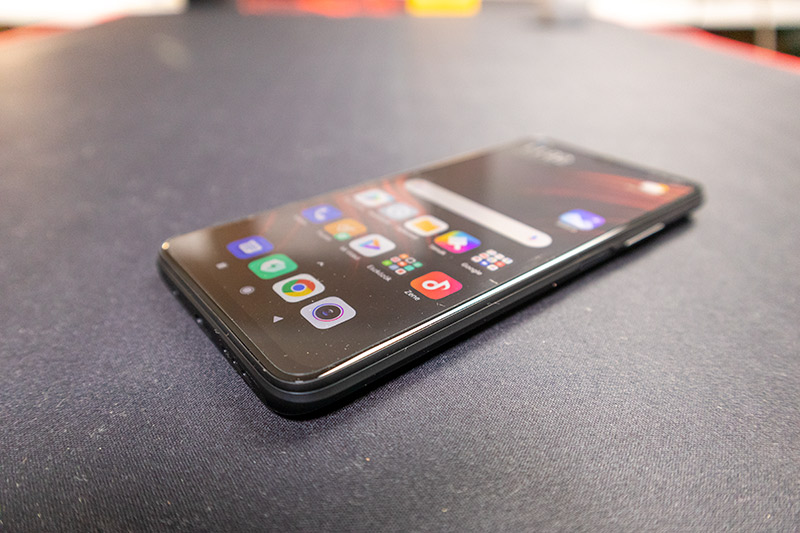
Mind a két telefon 64 vagy 128 Gb beépített tárral rendelkezik, vagyis első ránézésre nincs különbség. Azonban az adatokat böngészve kiderül, hogy míg a Note 9 eMMC, addig az M3 UFS technológiára épül. Ebben a cikkben a technológiák különbségébe nem megyek bele, de a lényeg az, hogy az UFS sebessége mérföldekkel jobb, olyannyira, hogy leginkább felsőkategóriás készülékekben találkozhatunk vele.
Milyen eltérés van még? A kamerák terén a Redmi Note 9 jobbnak tűnik, hiszen több kamera van benne. Itt jön azonban a fent már érintett kérdés, vagyis mennyi értelme van egy 8 megapixeles ultraszéles látószögű kamerának. Véleményem szerint nem sok, szóval számomra ez az előny nem előny.
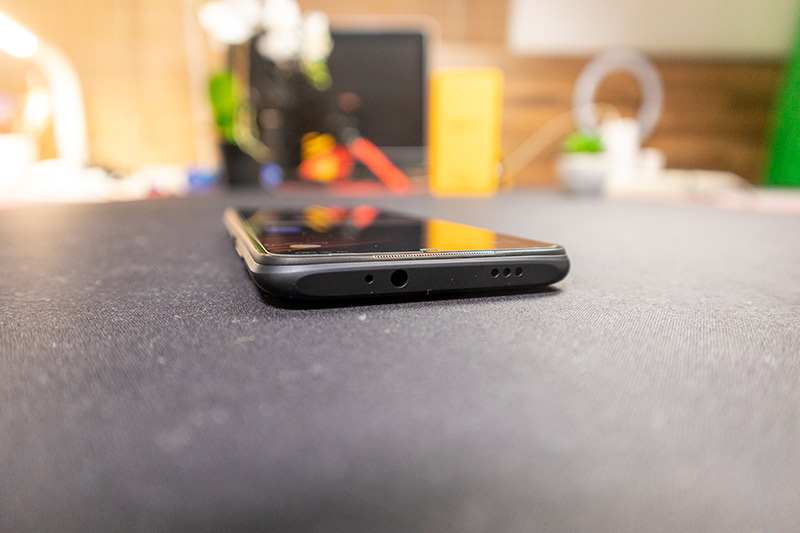
A főkamera azonban már egy fontos kérdés. Az M3 Sony szenzort kapott, addig a Note 9-ben egy Samsung szenzor dolgozik (tudtommal). Az eddigi tapasztalataim alapján a Sony jobb választás, én legalábbis jobban szeretem. Szóval, ilyen téren, számomra a Sony szenzor bőven nyom annyit a latba, hogy a hiányzó 8 megás kamerát feledni tudjam.
A kijelző terén a Note 9 jobb, legalábbis, ha a fényerőt nézzük, hiszen 450 nit az M3 400 nit-es értékével szemben. A felbontás, a képátló és az előlap-kijelző arány megegyezik. Jobb a Note 9 esetén a szelfikamera is (13 vs 8 MP).
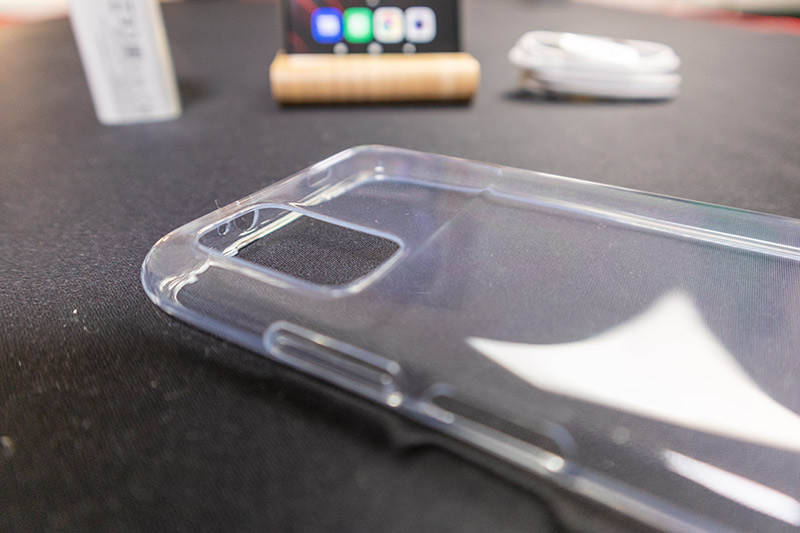
Megegyezik a Wi-Fi és a Bluetooth, de az M3-ból hiányzik a Galileo támogatás. Szenzorok, FM rádió és hasonlók terén nincs eltérés.
Amiben viszont van, nem is kicsi, az akkumulátor kapacitása. A Redmi Note 9-ben 5020- míg az M3-ban 6000 mAh a kapacitás, és ez jelentős különbség az M3 javára.
Látszik, hogy a két telefon nagyon hasonló. A Redmi Note 9-hez pluszban az egyel több kamerát, a kb. 12 százalékkal nagyobb fényerőt írhatjuk, míg az M3 esetén ki kell emelni a gyors háttértárat, a főkamera Sony szenzorát és a nagyobb akkumulátort.
A két telefon ára közel van egymáshoz, de az M3 azért kicsit olcsóbb.
Szóval, a lényeg. Az M3 egy nagyon jól kitalált telefon lett. Nem robbantott bankot, árával nem kergette sírásba a feltörekvő gyártókat, inkább csak egy nagyon jó alternatívát kínál a Redmi szériával szemben. A fentiek alapján úgy gondolom, hogy mindenki el tudja dönteni, hogy melyik készüléket választja a 150 dolláros kategóriából.
Ha megtetszett a telefon, akkor itt tudod megvásárolni:
Xiaomi POCO M3 mobiltelefon
Értékelés
86 %
Értékelés A Xiaomi a POCO M3-mal leginkább magának, pontosabban a Redmi almárkának teremtett konkurenciát. A telefon képességeit látva erősen elgondolkozhatunk, hogy ezt, vagy a kicsit drágább Redmi Note 9-et vegyük meg. Az alacsonyabb ár ellnére nálam a POCO M3 felé billen a mérleg nyelve.










